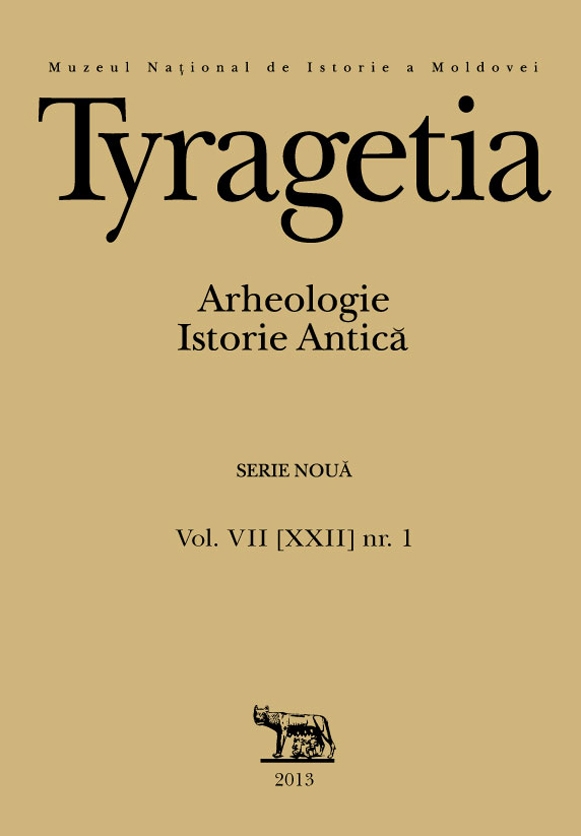The Royal Cemetery at Ur and Early Wheels
The Royal Cemetery at Ur and Early Wheels
Author(s): Elena V. IzbitserSubject(s): Archaeology
Published by: Muzeul Naţional de Istorie a Moldovei
Keywords: Old World; Ur; wagons; wheels
Summary/Abstract: Based on the analysis of data about the structure of wheels from the royal necropolis of Ur - a fragment of stone tile, mosaic “Standard” and wagon wheels from burials, as well as artifacts discovered in the other monuments, the author concludes that in the Ancient Middle East three-wheeled wagons with central lentoid plank went out of use before the turn of the 4th-3rd millennium BC. When actual wagons already used three-partite wheels, whose central section had parallel planks, wheels with central lentoid plank continued to be represented on seals and votive tiles, copying them from older samples. Wheels of actual wagons at the turn of the 4th and 3rd millennium BC, discovered in burials beneath barrows in the Pontic-Caspian steppe, had central section with straight sides, a construction from the next stage of wheel design development. Since, presumably, the first wheels were single-partite and time was needed for the development of three-partite design with central lentoid plank, and then rectilinear shape, the appearance of wheels in the Old World must be dated much more earlier than it is commonly believed - not later than the beginning of the 4th millennium BC.
Journal: Tyragetia (Serie Nouă)
- Issue Year: VII/2013
- Issue No: 1
- Page Range: 9-17
- Page Count: 9
- Language: English

